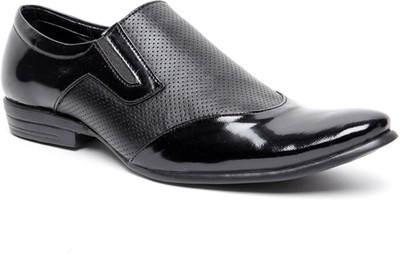Formal shoes are necessary to complete the formal attire. A wrong pair of shoes can ruin the look of a smart tailored suit. A pair of formal shoes should suit the occasion as well as match the attire. While selecting formal dress shoes, there are some factors to consider to choose the correct footwear. These factors mainly define the pieces and assembly of a formal shoe. The different parts and assembly of formal shoes affect the quality of the footwear and it is important to understand these pieces to help choose a quality pair which fits one’s feet.

The different pieces that comprise a formal shoe are – the upper, the lining, the outsole, the insole, the midsole and the heel. The upper covers all parts of the foot except the sole. It is constructed using leather, synthetic material, rubber, suede and other textiles. The highest quality material generally used is genuine leather upper and suede. The inside part of the upper is the lining. It provides extra insulation to the foot and protection for the upper. The outsole is the bottom part of the shoe and it provides support for the foot. The inside part of the bottom of the shoe is the insole and it should take the shape of the foot’s arch to provide maximum support and comfort. Midsole comes between the insole and the outsole and it is there to provide extra comfort for the sole. Heel pieces elevate the shoe and act as shock absorber for the heel of the foot.
Assembly determines how the pieces are held together and this decides the quality of the formal shoes. Welting and cementing are the two common assembly processes employed. Welted shoes have a piece of leather, rubber or plastic stitched to the upper and the insole. These pieces are called welts and the space the welt encloses is filled with material like cork. Welted construction provides waterproofing along the bottom of the upper. In cementing, the outsole is attached to the insole and the upper using a binding agent like glue. The space between the insole and the outsole is filled with filler material to even out the foot bed.
There are different styles of formal shoes available. These styles differ in their assembly and detailing.
Chelsea Boots – The laceless Chelsea boot dates back to the Victorian era and it has an upper that comes over the ankle which stretches open using elastic on the side.
Derby Shoes – It is called open-lacing for its attached eyelets on the outside of panels on single-piece uppers. It was originally used as a hunting shoe in the mid-9th century.
Loafers – Also called slip-on shoes, these have small pieces of elastic on the sides of the upper for slipping into theshoes with ease and for secure fit.
Other styles and design features include various toe-shapes and colours. These are considered according to the personal style of the wearer.
No comments:
Post a Comment